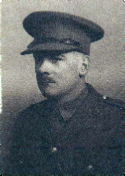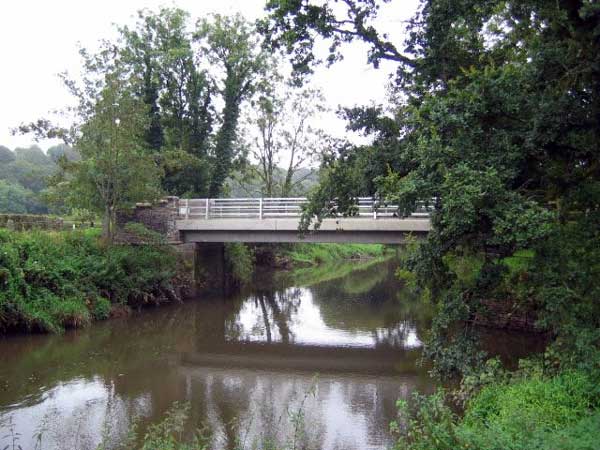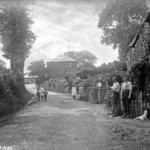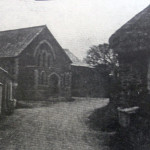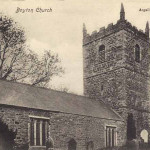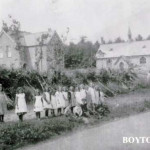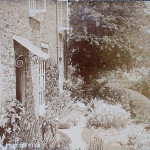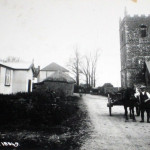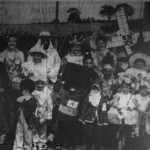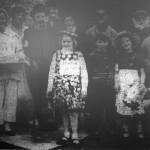.
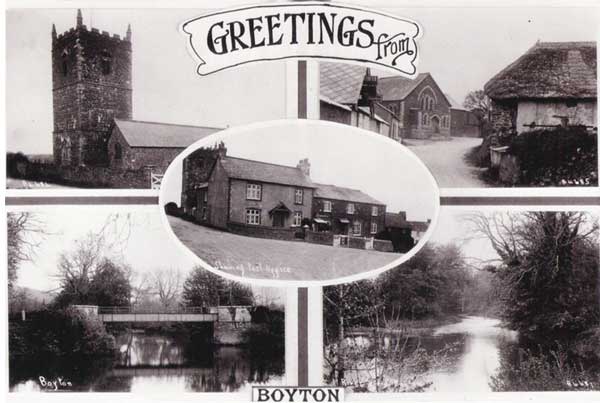
Boyton is a civil parish and village in Cornwall and is situated close to the River Tamar and the border with Devon. It is about six miles north of Launceston. Before border changes in the early 20th century, Boyton was actually a part Devon parish being divided between Cornwall and Devon. The Devonshire part was called Northcot Hamlet and had a small portion jutting into the West Tamar portion of Werrington, being altogether severed by the Cornish part of Boyton from the main body of the hamlet.
Boyton is a rural parish which takes its name from Boia’s Farm and is mentioned in the Domesday Book as Boitone. It is bounded to the east by the Devon border, to the north by North Tamerton parishes, to the west by North Petherwin parish, and to the south by Werrington parish.
The manor of Boyton, purchased by Suetricius, Abbot of Tavistock, was forcibly retained by Robert, Earl of Cornwall, at the time of the Domesday survey. It belonged to Henry de Bodrigan, who died in 1308, and soon after to the priory of Launceston. In 1540 it was annexed to the duchy. The manor of Darracot and the barton of Beardon belonged to the late Richard Wymond, Esq. of St. Cadix, in St. Veep. The barton of Bredvosy, or Bradridge, also belonged to Launceston priory and was likewise attached to the duchy in 1540. William Symons, Gent, who died in 1692, resided there. He gave £100 towards rebuilding the church tower, which was completed in 1769, as appears by a tablet on the outside. Sir William Pendarves, who died in 1726, made Bradridge one of his seats.
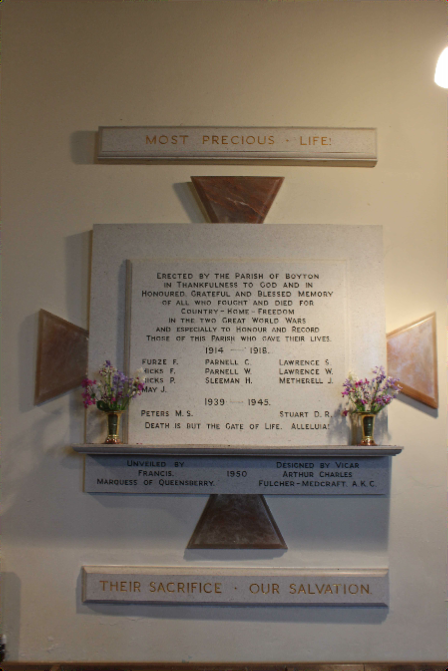 Erected by the parish of Boyton
Erected by the parish of Boyton
In thankfulness to God and in
Honoured, grateful and blessed memory
Of all who fought and died for
country, home and freedom
In the two great world wars
And especially to honour and record
Those of the parish who gave their lives.
1914-1918
Furze F.
Hicks F.
Hicks H.
May. J.
Parnell C.
Parnell W.
Lawrence S.
Lawrence W.
Metherell J.
1939-1945
Peters M.S.
Stuart D. R.
Boyton’s Fallen of World War One and Cornish and Devon Post News
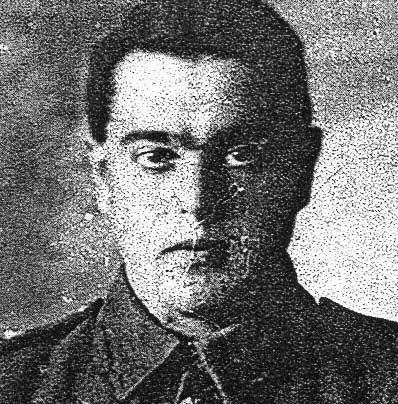
Frederick was born in 1895 to Thomas and Ellen Furse (nee Barriball) at Launceston. He was one of 8 children. His father was an Agricultural Labourer. In 1911 the family were living at Carey Moorgate Cottage, St. Giles on the Heath.
Frederick initially enlisted at Launceston with the D.C.L.I. (Regimental No.15802) but was later transferred to the Princess Victoria’s (Royal Irish Fusiliers) serving with the 1st Battalion (Regimental No. 13661). He served in Egypt and the Dardanelles where he contracted dysentery and rheumatic fever. He was in hospital for 10 months first in Malta the later at Netley Hospital in England. After some r and r at home, he returned to his unit in France in June 1916. He was killed in action on the 26th of August 1916. He is buried at the Railway Dugouts Cemetery, Ypres (Ieper), West Flanders (West-Vlaanderen), Belgium, Plot: Valley Cottages Cem. Mem. E. 2.
Frederick Richard Hicks
Fred was born in 1894 at Poundstock. On leaving school he went to live with his elder brother, Mr E. Hicks who was a Blacksmith living in Boyton. He worked at the Vicarage from 1912.
Fred enlisted with the DCLI (Regimental No. 17131) in December 1914 and after a period of training, he went to France with the 6th Battalion in May 1915. He died of his wounds sustained in battle possibly during the Battle of Flers-Courcelette on the 16th of September 1916. He was interred in the Heilly Station Cemetery, France. He is commemorated on the Boyton Roll of Honour.
The Battle of Flers–Courcelette (15–22 September 1916) was fought during the Battle of the Somme in France, by the French Sixth Army and the British Fourth Army and Reserve Army, against the German 1st Army, during the First World War. The Anglo-French attack of 15 September began the third period of the Battle of the Somme but by its conclusion on 22 September, the strategic objective of a decisive victory had not been achieved. The infliction of many casualties on the German front divisions and the capture of the villages of Courcelette, Martinpuich and Flers had been a considerable tactical victory but the German defensive success on the British right flank made exploitation and the use of cavalry impossible. Tanks were used in battle for the first time in history and the Canadian Corps and the New Zealand Division fought for the first time on the Somme. On 16 September, Jagdstaffel 2, a specialist fighter squadron, began operations with five new Albatros D.I fighters, which were capable of challenging British air supremacy for the first time since the beginning of the battle.
The attempt to advance deeply on the right and pivot on the left failed but the British gained about 2,500 yds (2,300 m) in general and captured High Wood, moving forward about 3,500 yds (3,200 m) in the centre, beyond Flers and Courcelette. The Fourth Army crossed Bazentin Ridge, which exposed the German rear-slope defences beyond to ground observation and on 18 September, the Quadrilateral, where the British advance had been frustrated on the right flank, was captured. Arrangements were begun immediately to follow up the tactical success which, after supply and weather delays, began on 25 September at the Battle of Morval; continued by the Reserve Army next day at the Battle of Thiepval Ridge. In September, the German armies on the Somme lost about 130,000 casualties, the most costly month of the battle. Combined with the losses at Verdun and on the Eastern Front, the German Empire was brought closer to military collapse than at any time before the autumn of 1918.
Philip Evan Hicks
Philip was born in 1886 to Philip and Mary Ann Hicks at Shebbear, Devon. Philip enlisted with the Devonshire Regiment as a Lance Corporal serving with the 1st Battalion at Holsworthy. He was killed in action on the 4th of October 1916 possibly at the Battle of Le Transloy. In a letter to a Mrs Bryan dated the 16th of November, his commanding officer wrote “L.Cpl. Hicks went over the top with the Battalion on October 4th he was reported as being ‘wounded’ but I was not near him at the time and can give no further information, and can find out no definite news about him. He is a thoroughly fine man, and I only hope he is safely in hospital and that his wife has heard from him by now” He left a widow Alice and their place of residence at the time of his death was at Northcott Hamlet, Boyton. He was interred at the Tyne Cot Cemetery, Plot 59, Row C, Grave 4. He is commemorated on the Boyton Roll of Honour.
Sidney Lawrence
Sidney was born at Curry Lane, Boyton in 1892 to William and Grace Lawrence. His father was an Agricultural Labourer. By 1911 he was working for Mr Thomas Benoy of Landhillock, Week St Mary as a Waggoner.
He enlisted at St. Columb, Cornwall with the Duke of Cornwall’s Light Infantry as a Private (Regimental No. 10295) serving with the 1st Battalion. He probably was already a serving Soldier at the outbreak of War considering that his death occurred so early in the fighting. He was killed in action on or before the 10th of September 1914 at the Battle of Marne. His body was never identified but his name is commemorated on the La Ferte-sous-Jouarre Memorial, La Ferte-sous-Jouarre, Departement de Seine-et-Marne, Île-de-France, France and on the Boyton Roll of Honour. At the time of his death, his residence was detailed as being at Week St Mary.
‘The Germans’ triumphant advance through France was halted, and they were pushed back to the Aisne River, taking up the line which broadly remained the front until early 1918. The Battle of the Marne prevented the Germans from conquering France in the first six months of the War.’
Walter Lawrence
I believe this to be Walter, the Brother of Sidney above. He was born in 1900 at Boyton. I cannot find any military service information.
Leonard John May
John as he was known, was born at Romsey and worked for Mr. Gillbard of Boyton Parish when he enlisted with the Duke of Cornwall’s Light Infantry (Regimental No. 23083) in August 1915 before transferring to the Devonshire Regiment as a Private (Regimental No. 33297), serving with the 8th Battalion D company part of 20th Brigade of the 7th Division. John eventually achieved the rank of Lance Corporal. He was reported as missing on October 26th, 1917 on the first day of the Second Battle Of Passchendaele (although it was later recorded that he had been killed in action). His mother, Mrs May, who at the time lived at Romsey, Hampshire, had been given a letter stating that he was a prisoner of war, and soon after another letter arrived stating that was released and had arrived at Hull. The letter continued to state that he would be in Romsey in a few days, however, a further letter arrived stating that they were sorry to say it was the wrong man. Mrs May attempted to find out what happened to her son, and the last communication she received was from the inquiry department of the British Red Cross, dated April 30th, 1919, stating “we much regret to say that notwithstanding consistent and careful inquiries, we have not succeeded in hearing anything of your son. ” With no body recovered his name is commemorated on the Boyton Roll of Honour and Romsey War Memorial. In the December issue of the Trigg Major Magazine, under Boyton, Leonard is recorded in the roll of honour as of the Isle of Wight.
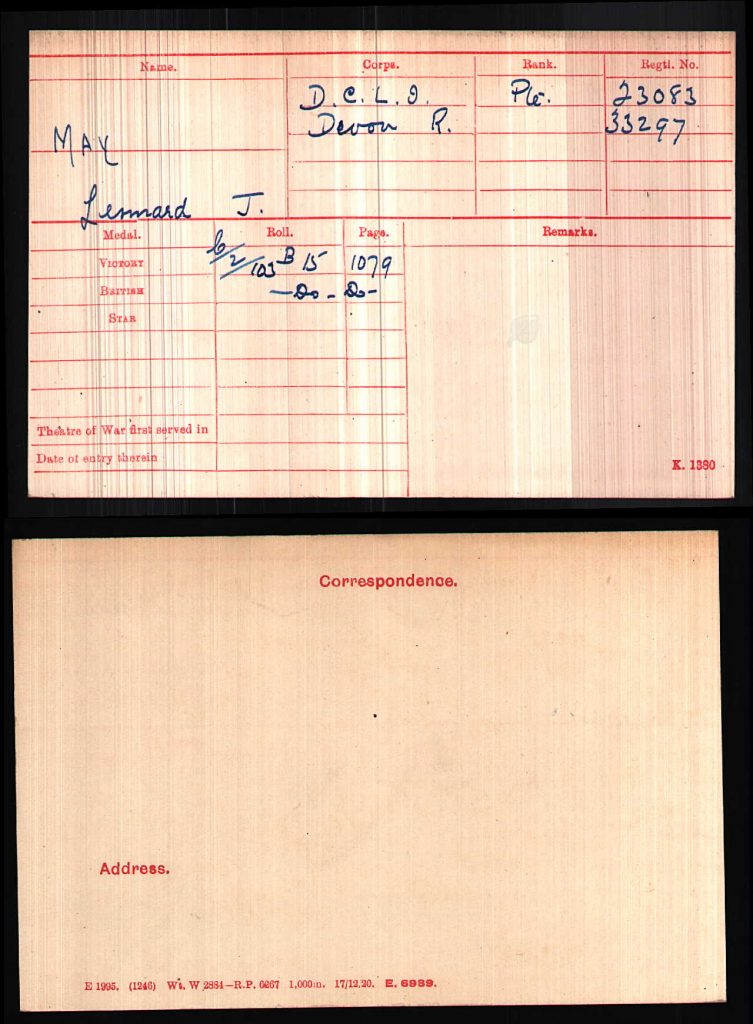
John Metherell
John was born in 1882 to Edward and Caroline Metherell somewhere in Cornwall. In 1891 his Father was farming at Higher Newton Farm, Boyton.
I can find no record of his military service.
Claude Richard Parnell
Claude was born in 1889 to Francis and Honor Parnell at Boyton Bridge, Boyton. His father was a Farm Labourer but by 1901 was listed as being a Thatcher.
Claude enlisted at Launceston with the Royal Garrison Artillery (Regimental No. 86885) as a Gunner Signaller serving with the 168th siege Battalion. He died on December 14th, 1918, after being gassed whilst in battle before the armistice. He is buried at the Saint-Sever Cemetery Extension, Rouen, Departement de la Seine-Maritime, Haute-Normandie, France, Plot: S. III. CC. 22. He is also commemorated on the Boyton Roll of Honour.
Walter Parnell
Walter was born in 1885 to Robert and Mary Ann (nee Dawe)Parnell at Tallastone, Boyton. His father was a Farm Labourer. On leaving school, Walter went to work for Mr John Rowe at Higher Hornacott, Boyton as a Horseman. By 1911 he had moved to Torquay and was boarding with William and Jane Braund at 7 Marchwood Terrace, Mudges Hill, Torquay. His given profession was Jobbing Gardener. He enlisted at Newton Abbott as a Private with the Devonshire Regiment (Regimental No. 42684) serving with the 1st Battalion. He was killed in action at the ‘Battle of Broodseinde’ on the 4th of October 1917 aged 33. His body was never identified but his name is commemorated on the Tyne Cot Memorial, Zonnebeke, West Flanders (West-Vlaanderen), Belgium and on the Boyton Roll of Honour. He was residing at Babbacombe, Devon at the time of his death.
The Battle of Broodseinde was fought on 4 October 1917 near Ypres in Flanders, at the east end of the Gheluvelt plateau, by the British Second and Fifth armies and the German Fourth Army. The battle was the most successful Allied attack of the Battle of Passchendaele. Using “bite-and-hold” tactics, with objectives limited to what could be held against German counter-attacks, the British devastated the German defence, which prompted a crisis among the German commanders and caused a severe loss of morale in the German Fourth Army. Preparations were made by the Germans for local withdrawals and planning began for a greater withdrawal, which would entail the loss to the Germans of the Belgian coast, one of the strategic aims of the British offensive. After the period of unsettled but drier weather in September, heavy rain began again on 4 October and affected the remainder of the campaign, working more to the advantage of the German defenders, who were being pushed back on to far less damaged ground. The British had to move their artillery forward into the area devastated by shellfire and soaked by the return of heavy rain, restricting the routes on which guns and ammunition could be moved, which presented German artillery with easier targets.
Harold John Sleeman
Harold was born in July 1896 to Frederick and Ann (nee Kinsman) Sleeman at Bradbridge Cottage, Boyton. His father was a Woodman. He enlisted at Launceston initially as a Private with the Worcester Regiment (Regimental No. 5216) but later transferred to the Princess Charlotte of Wales’s (Royal Berkshire Regiment) (Regimental No. 30699) serving with the 8th Battalion. He was killed on the 29th of July 1918 at the Battle of the Tardenois.
He is buried at the Südwestfriedhof der Berliner Synode (BerlinSouth-Westernn Military Cemetery), Stahnsdorf Potsdam-Mittelmarker Landkreis, Brandenburg, Germany, Plot: XX. D. 1 and is commemorated on the Boyton Roll of Honour.
During the First World War, the Tardenois was the site of intense fighting. During 22–26 July 1918, the Italian 2nd Corps, supported by two British divisions, launched an offensive that drove the Germans back behind Fère-en-Tardenois. This is known as the battle of Tardenois.
Boyton’s Fallen from World War Two
Maurice Sewell Peters
Maurice was born in 1917 to Charles and Ruth Peters at Launceston, they later moved to The Beeches, Boyton. Maurice worked as a correspondent with the Cornish and Devon Post before enlisting with the DCLI (Regimental No. 5438316)in 1938 serving as a Sergeant. As often was the case during either war, men were transferred to other regiments and this was the case for Maurice as he was seconded to the Force Maritime Regiment of the Royal Artillery. There was a need for qualified men to man the guns on merchant ships and it was in this role that Maurice was employed in doing. On 2nd November 194,2 Maurice was a gunner on the merchant vessel DEMS (Defensively Equipped Merchant Ship) Empire Gilbert. She was en route from the River Tyne to Archangel via Loch Ewe and Reykjavik, carrying war materials, including tanks and aircraft. Having left Reykjavik and on the final leg of the journe,y the ship was sunk 275 miles north of Iceland (70° 15’N, 13° 50’W) by torpedoes from the U-boat U-586 commanded by Dietrich von der Esch. At 01.18 hours on 2 Nov 1942, the unescorted Empire Gilbert (Master William Williams) was hit on the port side by two torpedoes from U-586 and sank within 2 minutes southwest of Jan Mayen Island. The U-boat had chased the ship for about two hours and missed with a first spread of two torpedoes at 00.17 hours. The Germans arrived at the sinking position after 30 minutes and rescued two men (deck boy Ralph Urwin and gunner Arthur Hopkins) sitting on a beam in the ice cold water, who were already unable to move and had to be lifted aboard. Von der Esch then tried to question six survivors on a raft but received no answer, so he took another man as a prisoner aboard, the gunner Douglas Meadows. They took care of the survivors and landed them at Skjomenfjord, Norway on 5 November. The master, 46 crew members and 17 gunners (the ship was armed with one 4.7in, one 40mm, four 20mm and eight Twin Marlin machine guns) were lost.
Maurice’s body was never recovered but his name is commemorated on the Plymouth Naval Memorial and the memorial in Boyton Church.
Donald R. Stuart
Donald was born in 1918 to Major and Mrs. W. J. (nee Ward) Stuart at Plymouth. The family later moved to reside at Floden Tor, Boyton. H e enlisted with the DCLI in 1938 but was subsequently transferred to the Somerset Light Infantry serving as a Lieutenant (Regimental No.217367) of the Airborne Division. He was killed in action at Arnhem spearheading the assault under Colonel Snow for control of Arnhem bridge on the 1st of October 1944. He is interred at he Airborne Regiment Cemetery at Oosterbeek.
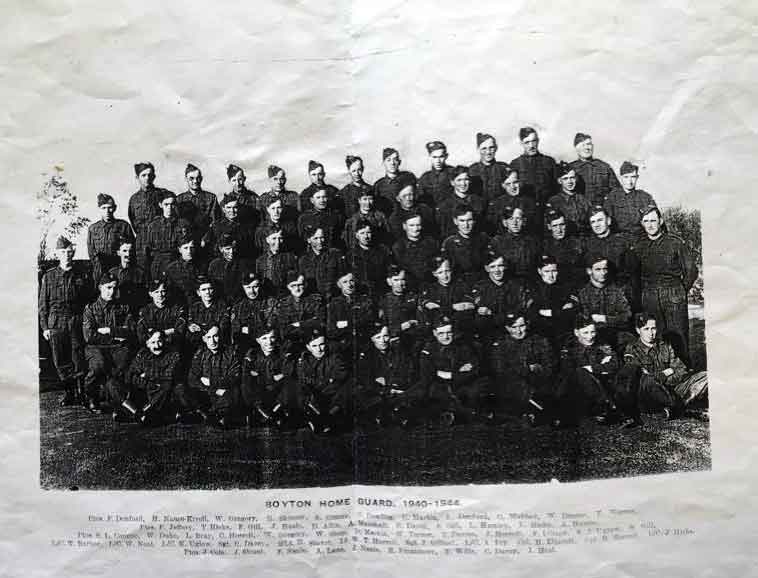
Ptes. F. Denford, H. Nance-Kivell. W. Gregory, E. Skinner, S. Dinner, C. Cowling, C. Martin, L. Denford, C. Webber, W. Dinner, E. Werren
Ptes. F. Jeffery, T. Hicks, F. Gill, J. Heale, D. Allin, A. Marshall, R. Davey, S. Gill, L. Hamley, L. Hicks, A. Harris.
Ptes. S. L. Connor, W. Duke, L. Bray, c. Horrell, W. Gregory, W. Sleep, D. Martin, W. Turner, T. Davies, J. Horrell, F. Dinner,, S.J. Uglow, H. Gill.
L/C. T. Barber, L/C. W. Neal, L/C. K. Uglow, Sgt. C. Davey, 2/Lt. H. Stuart, Lt. W.T. Horrell, Sgt. J. Gilbert, L/C. A. Fry, Cpl. R. Horrell, L/C. J. Hicks, Ptes. J. Cole, J. Strout, F. Neale, A. Lane, J. Neale, R. Finnemore, T. Wills, c. Davey, J. Heal.
BOYTON
Jack, son of Mr. F. Curtis of Beardon Mill, Boyton, has, with other children, been collecting eggs for wounded soldiers. He wrote his name and address recently on one of the eggs sent, and is now the proud possessor of a letter from Sgt. S.W. Edbrooke, Grenadier Guards, who, after expressing his gratitude for the gift, says he has been wounded twice, the first time in Oct. 1914, and again on 15th. Sept. of this year, when a rifle grenade struck him in the leg, but the Hun who fired it was now a ‘landowner’ somewhere in France.
Lt.Col. Knight. Son of Mrs. Knight of Hornacott Manor Lt.Col Guy Cunningham Knight, Commander, the 1st Bn. Loyal North Leicester Regt, has succumbed to wounds received on September 11th; son of the late Mr Edward Lucas Knight, of Hornacott Manor, attained to the command in February 1911, entered the Army in 1887; promoted Lt. in 1888; Captain in 1894; Brevet Major in 1900, and Major in 1904. During the South African war he raised and commanded the 1st. South Wales Mounted Infantry Brigade, taking part in operations in the Orange Free State, including action in Transvaal, Vet River and Zand River. He took part in several actions in Transvaal near the end of the war. Mentioned in Dispatches on September 10th 1901.
A Letter from Pte Dinner inserted in the Cornish & Devon Post:-
TERRIERS IN INDIA :A SIX DAYS’ TOUR By Pte. S.J. Dinner, of Boyton Bridge.
We have. received through Mr. and Mrs Dinner of Boyton Bridge, an interesting account by their son, Pte Dinner, of 4 Devons, of a six days’ tour in India, undertaken by a party of Terrriers just before Xmas. Pte Dinner went out to India from Exeter with the Devon Territorials soon after the war began. He was at the Albert Memorial College studying for the teaching profession. He is one of the old Horwell boys. He was only twelve years old when he won a scholarship for the grammar school. Mr. Dinner and three friends planned out a circular tour such as would show them several of the most famous of the old cities of India. Nearly everyone, writes Mr. Dinner, makes up his mind to visit some of them if he can scrape up the money and obtain leave, which is usually not very difficult, we are glad to hear. Leave having been obtained, the party started from Ferrozepore in the Punjab, Sunday night, December 12th., arriving at Delhi next morning.
The itinerary was as follows: Delhi, Monday, December 13th; Agra, Tuesday; Cawnpore, Wednesday; Lucknow, Thursday; Amritsar, Friday; Lahore, Saturday. At Delhi they saw the famous marble palace built by Shah Jehan; the Great Mosque, the largest in the world, the memorial church, ‘a very beautiful building especially inside,’ with the cross and ball which originally rested on the spire of the church; the famous Cashmere Gate, gallantly blown up during the siege of Delhi. After viewing the statue of John Nicholson, soldier and administrator, they drove out to the Ridge which was the position held by the little British Army during the siege, commanding a fine view of the city, ‘it’s highest point is a tall brick tower with tablets all round giving particulars of the siege. From here the army set out to storm the Cashmere Gate.’ During the day the tourists drove through parts of the city and along the Chuncli Chonk, or Silver Street, the fine main street of the city.
At Agra they saw the famous Taj Mahal, which M.r Dinner thus describes: “This is considered the most beautiful building in the world and I quite believe it. We entered a splendid gateway and found ourselves in beautiful gardens in the midst of which stands this lovely mausoleum with its white dome and its four graceful minarets. We entered a door and found ourselves in a dim-lit white dome. Light is faintly admitted by carved marble lattice work. In the centre are the two tombs of Shah Jehan and his wife. Both are inlaid with designs of flowers in coloured marble quite impossible to describe. All around is a carved marble screen. Overhead hangs a fine brass lamp, given by Lord Curzon.”
From Cawnpore they drove down to the banks of the muddy Ganges and saw the spot where so many were murdered by the treacherous natives. ‘After washing our hands in the sacred river we drove to the gardens and saw the fine monument erected over the well down which the bodies were thrown. A carved Gothic screen surrounds the well and over it is a white marble angel and a cross. This fine memorial was erected by the Government. Close by is a little cemetery in which many of the victims were buried. One cross was very interesting to me. It marks the grave of the women and children of the old 32nd. Regiment, now the DCLI. I felt rather sad at Cawnpore when I though of the horrible end of over a thousand people, especially the women and little children.”
Lucknow, the capital of the united provinces, is described as a ‘fine town with a large European quarter of shops and houses. It is the most European quarter I have seen so far. There are good roads, pavements; cars dashing about and most wonderful of all, numbers of English. It was a luxury for us to see so many white ladies at once.’ The party rounded up the evening by going to the Rink Theatre to see the pictures. Mr. Dinner notes that he slept the night on a spring mattress, a luxury, he says, which Tommy only finds when he is laid up in dry dock – the hospital. This, says Mr. Dinner, was the only occasion during the whole trip when ‘we took off our togs.’
After they had seen the sights in Lucknow they left by the Punjab mail for Amritsar – nineteen hours journey. On the way there was a little bit of Launceston in store for them. ‘In the evening we passed through Bareilly. I jumped out of the train and on the platform found two Launceston sergeants that I knew in the 1/4th. DCLI. They were Sergeant Edwards of Polapit, Boyton, and Sergeant Cater of Lanson. We had a short chat and exchanged the news.’
At Amritsar they hired a gharry and drove to the Golden Temple through evil smelling streets. “This is the chief town of the Sikhs, and headquarters of their religion. To see the Temple we had to remove our boots, put on sandals and leave our tobacco behind us”. Describing the interior Mr. Dinner says “Under a dome is the Sikh Bible, the Grand Sahib, wrapped in numerous silk coverings; over it is a canopy of velvet. A certain yellow flower appears to be their sacred flower. It was strewed all over the floor and we were given garlands of them. In return we were asked for ‘charity’, in other words ‘baksheesh’. Among the coins we gave were some pice [(copper coins, a farthing). These the priest contemptuously threw to some beggars on the floor.”
Mr. Dinner expresses the view that ‘baksheesh’ or, in English, a tip, is the curse of India. ‘Every native comes cringing and salaaming hoping he may get some coppers. They are a perfect nuisance. The tips we gave to our guides formed no inconsiderable item in our expenditure.’
In conclusion, Mr Dinner says that they did the trip very cheaply. ‘In no other country, I think, can a person travel so far or see so much for a small sum. The money I spent I regard as a good investment providing me with a liberal education. It is a trip I shall never forget; and nothing has stimulated and intensified my interest in India, its history, peoples, and problems, more than my 6d.
Womens Land Army at Boyton.
During the Second World War, the ‘Jills’ of the Womens Land Army served in the Timber Corp at Boyton Bridge. They would work the heavy horses (below) in the nearby woods, pulling the felled trees to the railway by the riverbank of the Tamar. A small gauge diesel railway was built along the old canal path to carry the timber from the forest near North Tamerton down to the saw mill. The felled timber was used for many things including pit props.
The Camp at the bottom of Bragg’s Hill consisted of eight Nissen Huts in total and there is still evidence of their time by the river with a Nissen Hut that served as their camp bath house, still in evidence.
The nearest hostelry was the ‘Arscott Arms’ at Chapman’s Well, and they were often seen travelling there in an old lorry.


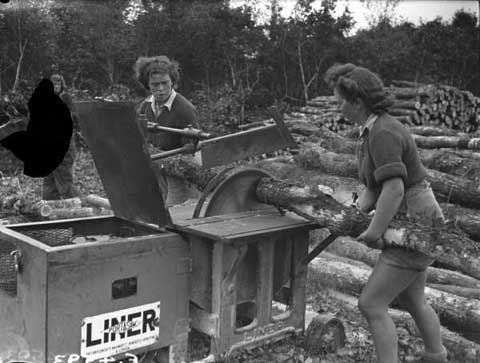
The original Boyton Bridge which spanned the River Tamar, was of timber on masonry foundations from around 1614. With Boyton being part of Devon until the 1960’s it is to the Devon Michaelmas sessions of 1614 that we obtain the first mention of the bridge ‘a Bridge lyinge over the River Tamar called Boiton Bridge in decaie but known not who are to repaire the same.’
This was replaced with a more sturdy stone construction. In 1875 the bridge was rebuilt with a cast iron concern and this was to remain in place for over a hundred years. In 2005 it was decided that the bridge would not be able to cope with the increased weight and volume of traffic, so this was replaced over a six week period with a modest 12m span concrete slab.
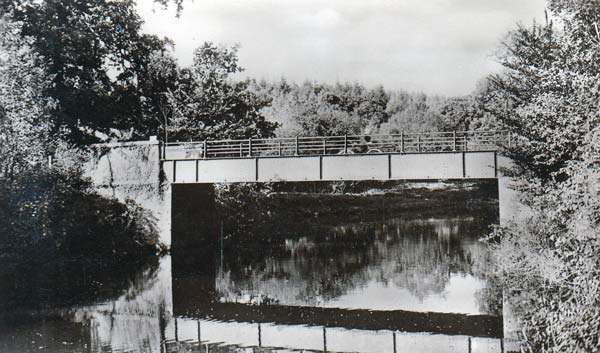

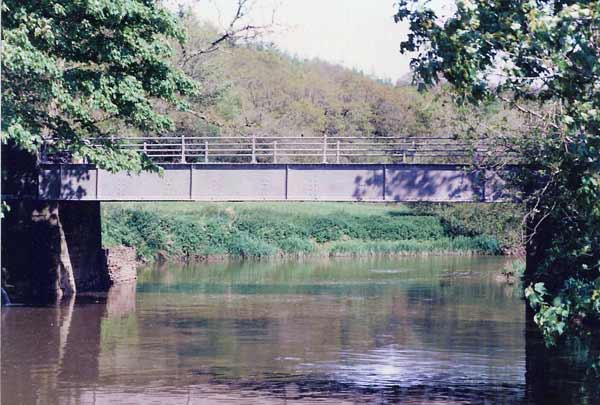
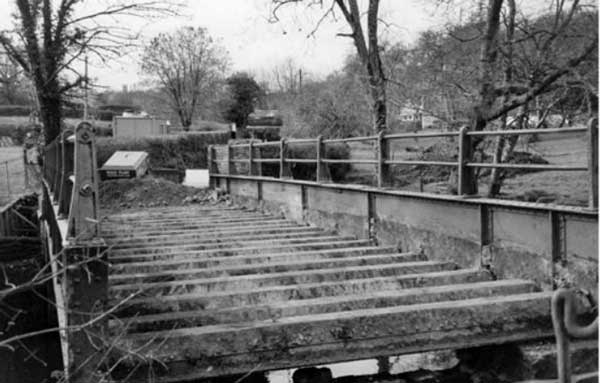
Above photos courtesy of John Neale and Nick Hairs.
Boyton Gallery.
Visits: 624

